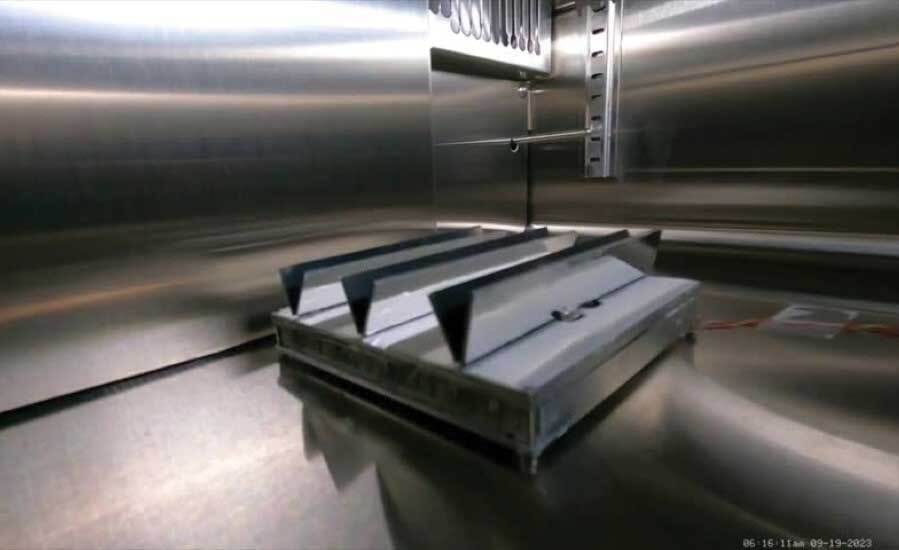
SCROLL
DOWN
A research paper published in the academic journal Device offers an alluring prospect to the roofing industry: an adaptive roof tile, which, when deployed in arrays on roofs, can lower heating bills in winter and cooling bills in summer — without the need for electronics.
The paper’s authors, UC Santa Barbara researchers Charlie Xiao, Elliot Hawkes, and Bolin Liao, have been working on the project to reduce costs on Americans’ energy bills and reduce the consumption of fossil fuels to run in-home HVAC systems.
The article, titled “Passively adaptive radiative switch for thermoregulation in buildings,” postulates:
•Tile-like radiative switch passively switches between cooling and heating states
•Switches between cooling and heating states within 3 degrees Celsius (34 degrees Fahrenheit) of the switch temperature
•Compared with static devices, it reduces cooling and heating needs by more than 2.5 times
"It switches between a heating state and a cooling state, depending on the temperature of the tile," Xiao, the lead author of the study, told the website TechXplore in a Dec. 13 interview. "The target temperature is about 65 degrees Fahrenheit — about 18 degrees Celsius."
The passive thermoregulation device, which is about 4 inches square, is a blend of Liao's expertise in thermal science and Hawkes' work in mechanism design — a movable surface that, as TechXplore describes, can change its thermal properties in response to a range of temperatures.
Researchers Propose ‘Adaptive Roof Tile,’ Responds to Outside Temp., Reduces Energy Consumption

Photo courtesy of the Iowa Economic Development Corporation
Based on the change in the volume of wax due to temperatures to which the wax is exposed, a wax motor creates pressure that moves mechanical parts, translating thermal energy into mechanical energy.
Wax motors are not a new concept: you can find them in various appliances, including dishwashers and washing machines, and more specialized applications, including those used in the aerospace industry.
For roof tiles, the wax motor — depending on its state — can push or retract pistons that close or open louvers on the tile's surface. Therefore, while the wax is solid in cooler temperatures, the louvers are closed and lay flat, exposing a surface that absorbs sunlight and minimizes heat dissipation through radiation.
As the paper states, as soon as the temperatures reach around 64.5 degrees Fahrenheit, the wax begins to melt and expand, pushing the louvers open and exposing a surface that reflects sunlight and emits trapped heat.
According to the paper’s conclusions, testing has demonstrated a reduction in energy consumption for cooling by 3.1 times and heating by 2.6 times compared with non-switching devices covered with conventional reflective or absorbing coatings.
"The device is still a proof-of-concept, but we hope it will lead to new technologies that one day could have a positive impact on energy expenditure in buildings," said Hawkes.
Photo courtesy of the Iowa Economic Development Corporation

